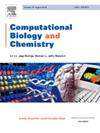pACPs-DNN:基于自关注深度学习模型的新型肽转化为进化和基于结构矩阵的图像预测抗癌肽
IF 2.6
4区 生物学
Q2 BIOLOGY
引用次数: 0
摘要
在全球范围内,癌症因其高死亡率仍是一项重大的健康挑战。传统的实验方法和疗法耗费大量资源,而且往往会产生严重的副作用。抗癌肽(ACPs)因其选择性、安全性和减轻耐药性的潜力而成为替代治疗药物。本文提出的 pACPs-DNN 是一种基于注意力机制的新型深度学习模型,用于准确预测 ACPs 和非 ACPs。pACPs-DNN 模型利用残基能量接触矩阵 (RECM)、置换矩阵表示 (SMR) 和特定位置评分矩阵 (PSSM) 嵌入将输入肽转化为图像表示,然后进行基于局部二进制模式 (LBP) 的分解,以捕捉增强的结构和局部语义特征。这些转换产生了新的特征集,包括 RECM_LBP、LBP_SMR 和 LBP_PSSM。随后,采用双层特征选择方法来识别排名靠前的最优特征集,然后用于训练基于注意力的深度神经网络。所提出的 pACPs-DNN 模型达到了令人印象深刻的 96.91 % 的训练准确率和 0.98 的 AUC。为了评估其泛化能力,该模型在独立数据集上进行了验证,在 Ind-I 和 Ind-II 数据集上的准确率比现有模型分别显著提高了 5 % 和 3.5 %。pACPs-DNN 所展示的有效性和稳健性突显了它作为一种有价值的工具,在推进药物发现和癌症相关疗法开发的学术研究方面的潜力。本文章由计算机程序翻译,如有差异,请以英文原文为准。
pACPs-DNN: Predicting anticancer peptides using novel peptide transformation into evolutionary and structure matrix-based images with self-attention deep learning model
Globally, cancer remains a major health challenge due to its high mortality rates. Traditional experimental approaches and therapies are resource-intensive and often cause significant side effects. Anticancer peptides (ACPs) have emerged as alternative therapeutic agents owing to their selectivity, safety, and potential to mitigate drug resistance. In this paper, we propose pACPs-DNN, a novel attention mechanism-based deep learning model developed for the accurate prediction of ACPs and non-ACPs. The pACPs-DNN model transforms input peptides into image representations using residue-wise energy contact matrix (RECM), substitution Matrix Representation (SMR), and Position Specific Scoring Matrix (PSSM) embeddings, followed by local binary pattern (LBP)-based decomposition to capture enhanced structural and local semantic features. These transformations generate novel feature sets, including RECM_LBP, LBP_SMR, and LBP_PSSM. Subsequently, a two-tier feature selection approach is employed to identify a high-ranking optimal feature set, which is then used to train an attention-based deep neural network. The proposed pACPs-DNN model achieves an impressive training accuracy of 96.91 % and an AUC of 0.98. To evaluate its generalization capability, the model was validated on independent datasets, demonstrating significant improvements of 5 % and 3.5 % in accuracy over existing models on the Ind-I and Ind-II datasets, respectively. The demonstrated efficacy and robustness of pACPs-DNN highlight its potential as a valuable tool for advancing drug discovery and academic research in cancer-related therapeutic development.
求助全文
通过发布文献求助,成功后即可免费获取论文全文。
去求助
来源期刊

Computational Biology and Chemistry
生物-计算机:跨学科应用
CiteScore
6.10
自引率
3.20%
发文量
142
审稿时长
24 days
期刊介绍:
Computational Biology and Chemistry publishes original research papers and review articles in all areas of computational life sciences. High quality research contributions with a major computational component in the areas of nucleic acid and protein sequence research, molecular evolution, molecular genetics (functional genomics and proteomics), theory and practice of either biology-specific or chemical-biology-specific modeling, and structural biology of nucleic acids and proteins are particularly welcome. Exceptionally high quality research work in bioinformatics, systems biology, ecology, computational pharmacology, metabolism, biomedical engineering, epidemiology, and statistical genetics will also be considered.
Given their inherent uncertainty, protein modeling and molecular docking studies should be thoroughly validated. In the absence of experimental results for validation, the use of molecular dynamics simulations along with detailed free energy calculations, for example, should be used as complementary techniques to support the major conclusions. Submissions of premature modeling exercises without additional biological insights will not be considered.
Review articles will generally be commissioned by the editors and should not be submitted to the journal without explicit invitation. However prospective authors are welcome to send a brief (one to three pages) synopsis, which will be evaluated by the editors.
 求助内容:
求助内容: 应助结果提醒方式:
应助结果提醒方式:


